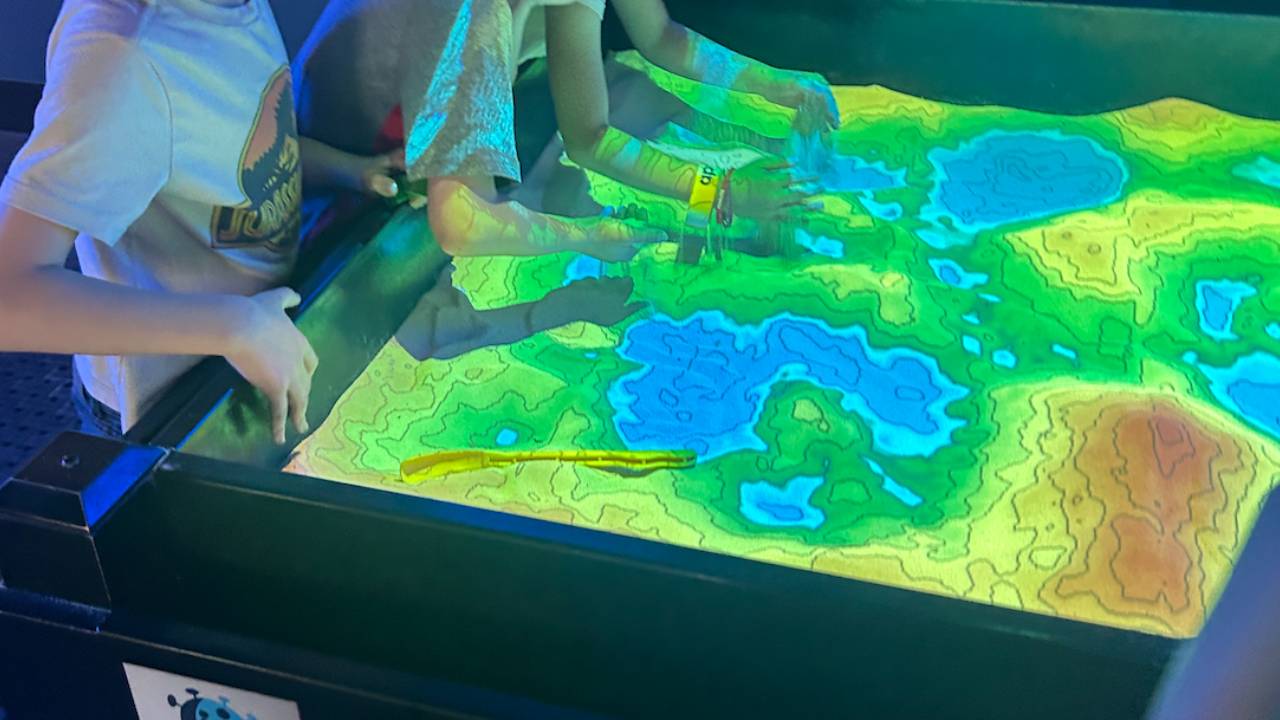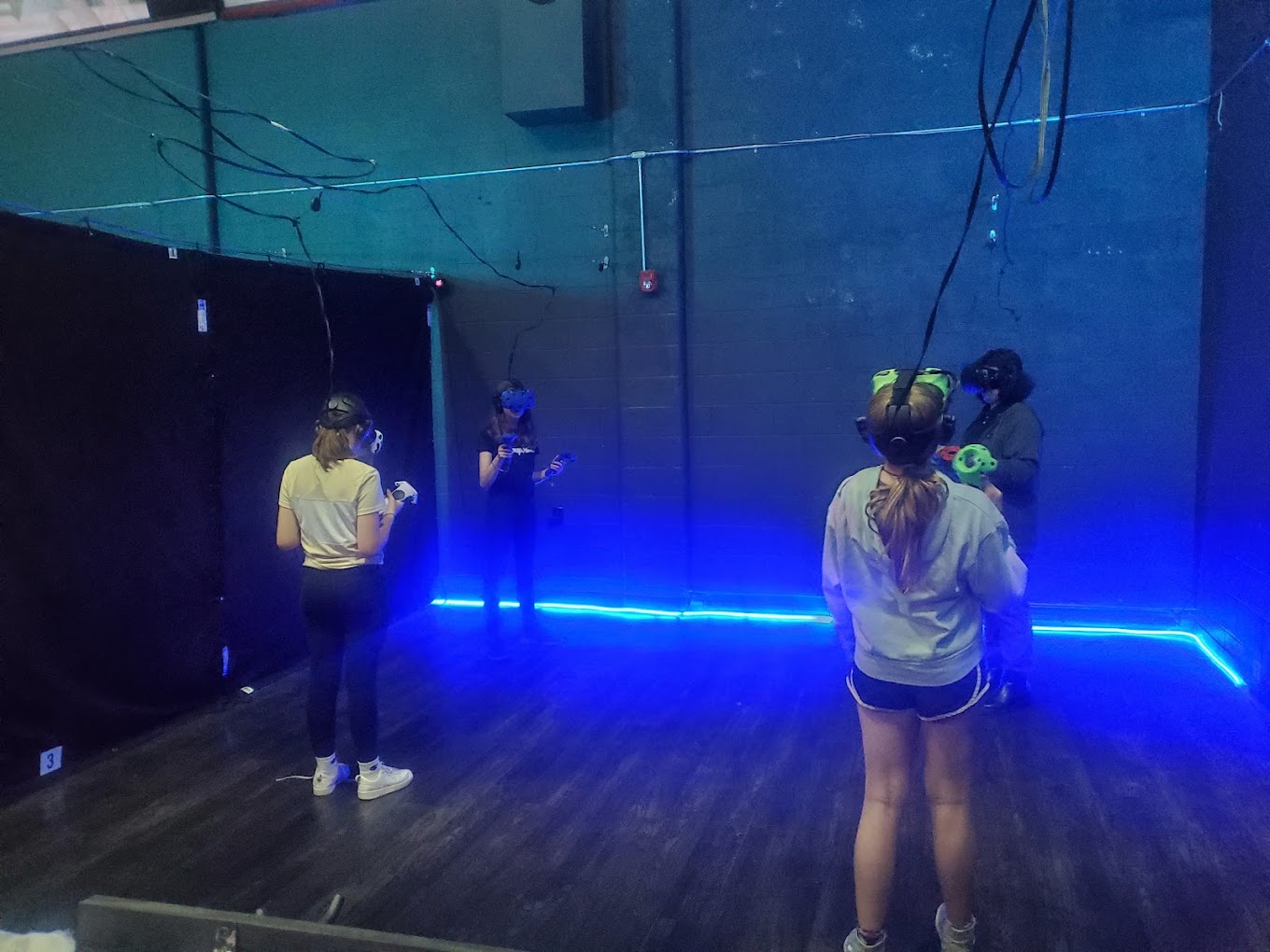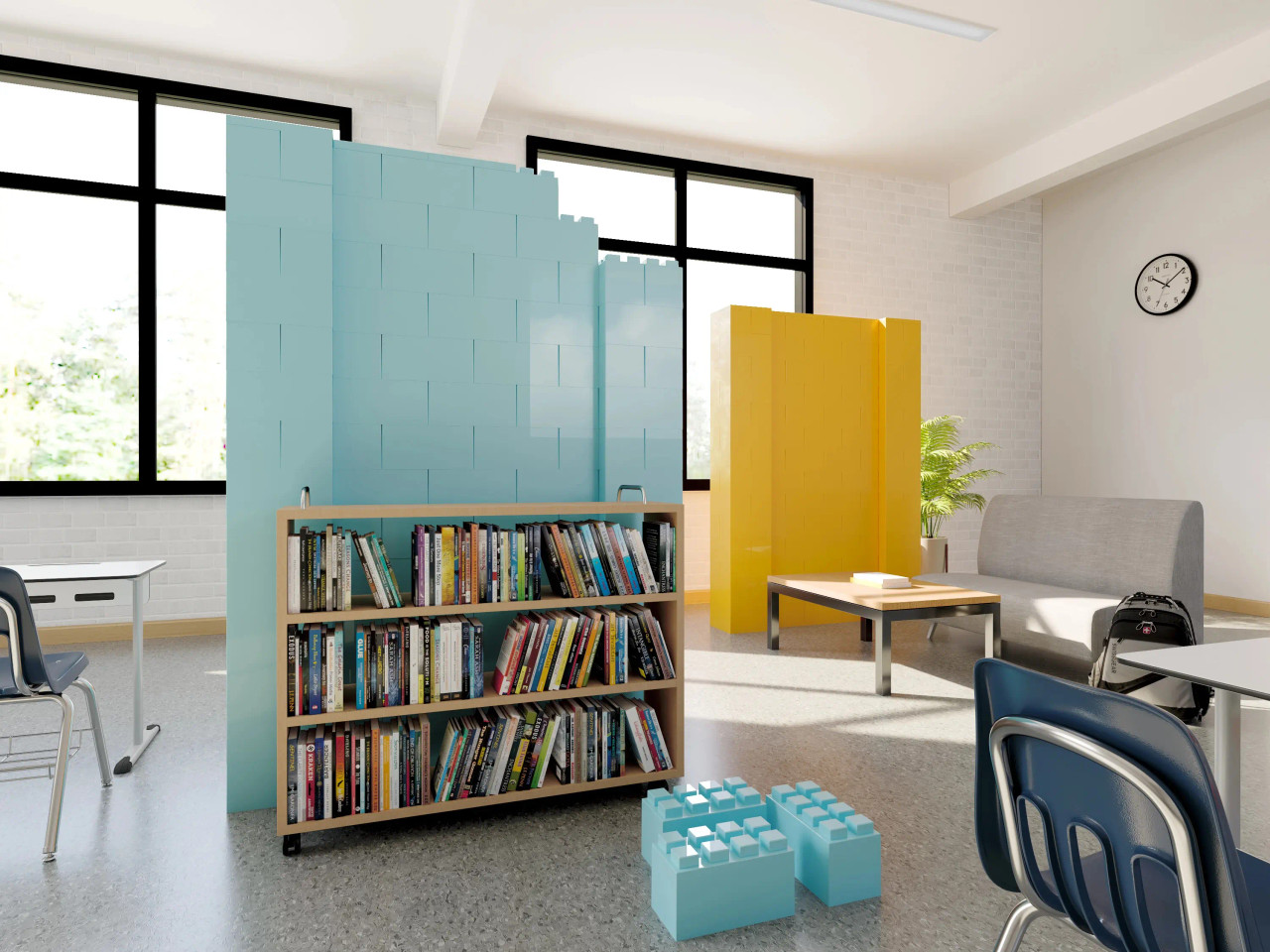The Future of Indoor Playgrounds and Play Cafes: Innovations and Emerging Trends to Watch

In today’s article, I want to do something a little different– and I wanted to take a peek into the future and explore a few of the exciting innovations and emerging trends that are shaping the indoor playground and play cafe industry as a whole.
I know my content typically focuses on the smaller footprint spaces that are more geared towards gross motor and imaginative play– but I am seeing some really fun trends happening in the larger spaces and museums and I expect to see them trickle down to the smaller spaces in the coming years as technology advances and more affordable and versatile options begin to become manufactured and available in the marketplace.
We have seen plenty of times before where trends start out in the larger museums and as we all know, history does tend to repeat itself!
Staying ahead of the curve is essential to providing exceptional experiences for children and families. So, let's dive into the fascinating innovations happening in indoor play and discover what the future holds for your business. And if YOU have been traveling around and checking out spaces of various sizes and types like I have and have seen any other trends that you’d like to share– please feel free to DM me on instagram– I would love to hear from you and share what YOU have seenso we can all learn and grow together in our play based businesses.
Alright– let’s dive in.
1) Virtual Reality (VR) and Augmented Reality (AR) Integration
Imagine children stepping into a virtual world where they can interact with fantastical creatures, explore new environments, and embark on thrilling adventures– all within the walls of your indoor play space. VR and AR technologies are revolutionizing the indoor play experience, offering unprecedented levels of engagement and interactivity. We have seen many museums and larger spaces incorporate VR headsets or AR devices into their spaces that transport children to immersive digital realms within your play space. For example, a VR-based dinosaur expedition or an AR treasure hunt that combines physical and virtual elements.
We have a space by us called Orion’s landing that we checked out and my kiddos, especially my 8 year old, absolutely LOVED the amazing VR sets there and have not stopped talking about it in the months since we visited!

There are already companies offering a variety of solutions and varying price points– one such company being House of Play.
This may not be a great path to go down if your focus is babies and toddlers– but if you are serving the 6 and up crowd, VR and AR are amazing options to give your customers an out of this world experience– even if you’re working with a small space.
2) Interactive Projection Mapping:
Projection mapping is a cutting-edge technology that transforms ordinary surfaces into dynamic, interactive displays.
Imagine the floor of your indoor playground turning into a vibrant ocean teeming with marine life, reacting to children's movements. Interactive projection mapping brings play areas to life, allowing children to engage with projected images, play games, and explore enchanting environments.
For instance, a projection-mapped interactive hopscotch game or a mesmerizing light show that reacts to children's touch.
And again, this is a really cool way to make the most of a smaller space, and be able to constantly rotate and refresh the activities children can engage in inside of your space.
We have already seen this in smaller playgrounds with the BEAM interactive projector, but it seems like there are a ton more companies entering this space in the near future.
One of my favorite examples of this is at my local science museum. The Buffalo Science museum has a really cool sand table that has Interactive Projection software that shows kids the topography of their structure and how it might appear on a map.

So, for example, if they build a mountain with the sand it turns red. If it’s more level, the sand turns green. And if a child makes a valley, the sand turns blue to indicate that they built a lake or other water feature.
This table alone kept several 8 year olds occupied for over 30 minutes, and always had a crowd around it. And the best part? The technology can allow the museum to choose a new option to project so again, they can refresh their space more often and in a way that’s more affordable in the long run than continuously buying new structures and equipment.
3) Sensory-Engaging Elements:
In my opinion, the future of indoor play will focus on creating sensory-rich environments that stimulate children's senses and enhance their play experiences. You can do this by incorporating interactive lighting systems that respond to touch, sound, or motion, creating an immersive ambiance.
You can also integrate soundscapes that provide soothing or stimulating audio experiences. You can even use textured surfaces, such as tactile walls or flooring, to engage children's sense of touch. For example, an interactive wall with LED panels that change color and texture based on touch or a musical play area with interactive sound pods.
And if you’re looking for an example, the Strong Museum of Play in Rochester New York has a TON of these experiences incorporated into their space as you can see pictured.

4) Incorporation of STEM (Science, Technology, Engineering, and Math) Education:
The future of indoor playgrounds will absolutely see a stronger emphasis on incorporating STEM education into play experiences. We are seeing companies design play areas that encourage children to explore scientific principles, engineering concepts, and mathematical reasoning through hands-on activities.
For instance, building blocks with embedded magnetic technology that teaches engineering principles, interactive screens that provide coding challenges, or science exploration stations where children can conduct experiments and learn about the natural world.
At Explore and More Children’s Museum, they have an entire STEM section with a bunch of options for this type of play– and it’s sectioned off from the gross motor area to keep it more tidy and organized. But even though this area is focused towards kids preschool age and older, they have other things like a train table scattered so younger siblings can join in on the fun and learning as well.
If you listened to my interview with Karri from Smart Playrooms, you have already heard how critical it is for younger children to learn from their older peers, and much of this comes from this simple concept of parallel play.
Even if they can’t yet grasp the STEM concepts themselves, their little minds are like sponges– absorbing everything around them and I think this is such a cool way to encourage this type of learning through play early on in childhood.
5) Multi-Functional Spaces:
Future indoor playgrounds will undoubtedly feature versatile and multi-functional spaces that adapt to different activities and age groups. We are now seeing play areas designed with modular elements, movable partitions, and adjustable equipment configurations to cater to varying play experiences.
For example, an open space that can transform into a mini-sports court for active play, a creative corner with movable art stations, or a quiet reading nook with comfortable seating. Flexibility in design allows you to cater to a broader range of play preferences and accommodate different events and programs.
Especially for those who focus on memberships and need to keep their space and equipment rotated, I would definitely keep this in mind whether you’re planning your first or second location.
As another example, a lot of my members in Play Maker Society utilize Everblocks to partition their space– which allows them to reconfigure their entire layout in an easy, affordable way.

And many also have rotating elements like playhouses that change theme each season like we did with our generic lilliput play home or a sensory table that changes its contents every month like Alera from Project Play.
6) Integration of Technology and Analytics:
Now we are getting a bit outside of the actual play area, and into the BUSINESS behind it. Leveraging technology and data analytics will play a crucial role in shaping the future of indoor playgrounds– and as a former corporate data scientist, I could not be more excited for this trend.
I am seeing spaces implement sensors, cameras, or RFID systems to collect data on visitor behavior, understand which are the most popular high-traffic spaces, and peak times in their businesses.
These spaces are then utilizing the analytics tools to gain insights into traffic patterns, preferred play areas, and guest demographics. For example, analyzing data to optimize play area layouts, scheduling staff based on peak visitor times, or personalizing experiences based on individual preferences.
We are also seeing more spaces adapt to kiosk check-in and ordering systems which I have talked about on this podcast and on my YouTube channel, and make other technological advances to streamline and automate their marketing, schedule, bookkeeping, customer service, and more.
This is a topic that is going to be covered really heavily by both myself and guest experts coming up inside my Play Maker Society membership in the coming months– so if you are a member– stay tuned, there are exciting things coming. And if you’re not yet a member, you can learn more and sign up here.
What it all boils down to, though, is this:
Data-driven insights empower you to make informed decisions, enhance operations, and provide tailored experiences for your guests. This all leads to greater revenue, more opportunities to expand, and a greater chance you will be able to make the living you dream of, all while living the balanced and present lifestyle you likely desire.
7) Emphasis on Health and Well-being:
With growing awareness of health and well-being, future indoor playgrounds will prioritize physical activity and healthy lifestyles.
You can engage with this trend by incorporating fitness-oriented play equipment, interactive games that encourage movement, and educational programs on nutrition and wellness.
For instance, incorporating climbing walls, active play structures with interactive fitness challenges, or hosting health-focused workshops and classes.
At the Explore and More Children’s Museum, for example, which I also featured on my YouTube channel , there is a semi-circle of exercise bikes (including one for people in wheelchairs or who are unable to pedal!) that adults and children can ride on collectively and their efforts light up a series of lightbulbs, combining wellbeing with some of the other elements we talked about in this article, like STEM principles.

They also have an entire floor dedicated to healthy food choices, exploring life on an organic farm, and more!
Creating a holistic approach to play that combines fun with health-conscious activities will attract families seeking a well-rounded experience for their children all while keeping your business priorities on trend with the industry.
8) Accessibility and Inclusivity
I have an entire article series on accessibility as well as an advanced training in my Play Maker Society program– but I absolutely love how spaces are prioritizing universal design right now and will hopefully continue to do so indefinitely.
And if you have never heard of Universal Design, I want to share this definition with you:
"Universal Design is the design and composition of an environment so that it can be accessed, understood and used to the greatest extent possible by all people regardless of their age, size, ability or disability. An environment (or any building, product, or service in that environment) should be designed to meet the needs of all people who wish to use it.
This is not a special requirement, for the benefit of only a minority of the population. It is a fundamental condition of good design. If an environment is accessible, usable, convenient and a pleasure to use, everyone benefits. By considering the diverse needs and abilities of all throughout the design process, universal design creates products, services and environments that meet peoples' needs. Simply put, universal design is good design." - Center for Excellence of Universal Design
Improving accessibility within indoor playgrounds is crucial to ensuring that children of all abilities can fully enjoy and engage in play.
Some of my favorite quotes about Universal Design if you are unfamiliar with the concept are,
“Diversity is a fact.
Equity is a choice.
Inclusion is an action.
Belonging is an outcome.”
And that one is by Arthur Chan.
The next one I love is from Christina Mallon, the head of Microsoft’s Inclusive Design team, and it’s “If you design for the extremes you include the middle”.
Many people assume that only spaces that specifically cater to people with disabilities should consider accessibility– but the exact opposite should be true. We should be designing all spaces to be inclusive– and that does not detract or take away ANYthing from those who are not disabled.
If anything, it enhances their experience and helps to develop a deeper understanding and compassion for the diversity– which as Arther Chan pointed out– will always exist in our world.
There are several ways indoor playgrounds can enhance accessibility in their space.
Firstly, they can provide ramped entrances or elevators to ensure that children using wheelchairs or strollers can easily access all areas of the facility.
Additionally, incorporating sensory-friendly spaces and calming areas allows children with sensory sensitivities or conditions like autism to have a comfortable retreat when they need a break. And you can check out my multi-part series about better accommodating autistic children and adults if you’d like to dig WAY deeper into this topic.
Offering inclusive play equipment, such as accessible swings or interactive elements at different heights, ensures that children with mobility challenges can actively participate.
And it’s as simple as replacing one bike that has pedals with one that has hand pedals instead. Someone with able legs can still use the hand pedal– which again comes back to the concept of universal design.
Also, clear pathways and ample spacing between play structures create an environment that is easy to navigate for individuals with mobility aids. By implementing these accessibility measures, indoor playgrounds can create an inclusive and welcoming environment that allows children of all abilities to play, learn, and thrive together.
To wrap this one up, the future of indoor playgrounds is filled with exciting innovations and emerging trends that will transform the way children play and learn.
From virtual reality and interactive projection mapping to STEM education and multi-functional spaces, staying ahead of these developments is essential to provide exceptional experiences for your young visitors.
Embrace the opportunities that technology, creativity, and education present, and create a future-proof indoor playground that captivates and inspires children for years to come.



